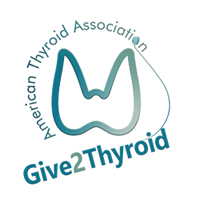SUMMARY OF THE STUDY
The IGHG in collaboration with the PanCareSurFup Consortium put together a panel of 33 international experts to formulate recommendations based on the available research. First, the existing recommendations were compared, and agreements and disagreements were determined. Then, after they discussed the possible benefits and harms of surveillance, the following questions were asked: who needs screening, what surveillance method should be used, how frequently and for how long should thyroid cancer surveillance be performed and, what to do if abnormalities are identified. The PubMed database was the principal source to look for answers. Two members of the panel analyzed each paper. The level and strength of the recommendations, based on the available data, were graded according to well-established methods.
Childhood and young adult cancer survivors treated with radiotherapy or 131I-metaiodobenzylguanidine (MIBG), which accidentally exposes the thyroid gland, are at increased risk for the development of thyroid cancer. There is no data showing that chemotherapy alone is associated with a higher risk. As there is benefit of detecting thyroid cancer early, surveillance for thyroid cancer is reasonable for at-risk survivors. Childhood and young adult cancer survivors need to be counseled by their health care provider regarding their risk, as well as the advantages and disadvantages of surveillance. However, the authors were unable to provide recommendations regarding the preferred surveillance method to detect a thyroid nodule (neck palpation vs. thyroid ultrasound) and recommended that the decision be made by the individual healthcare provider after discussing with the patient. It was found reasonable to begin surveillance 5 years after exposure. The panel suggested that, if periodic thyroid palpation is chosen as the screening, it may be reasonable to repeat surveillance every 1 to 2 years, while, if thyroid ultrasonography is chosen as the screening method, to repeat surveillance every 3 to 5 years. Referral to a thyroid specialist is recommended if a thyroid nodule is found by either method of surveillance.
WHAT ARE THE IMPLICATIONS OF THIS STUDY?
Childhood and young adult cancer survivors at risk for thyroid cancer should be counseled about risk and benefits of surveillance and the available options for surveillance. However, there is no data to provide specific recommendations. Initiation of surveillance and the surveillance method used needs to be chosen by the health care provider in consultation with the patient. This article highlights the importance of counseling and discussion, summarizes available evidence and emphasizes the need for more research in this area.
— Liuska Pesce, MD




